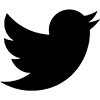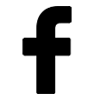I came across Elizabeth's Chia Vest and discovered her site filled with really interesting work involving the very unconventional.
-
I am really in awe of your work as an artist and an innovator, not to mention as a woman in your field which is super inspiring! What was your childhood like? What or who are the biggest influences in your life? Any major challenges?
I was fortunate to have been brought up by supportive, but lenient parents alongside a close younger brother in Central Maine. There was not a lot going on in my town growing up, so we made our own fun with the neighborhood kids - and always outside. As I got older, the neighborhood games transitioned into more competitive sports. I spent a lot of time traveling on various sports teams, mostly soccer. When I was not playing soccer I was making and wearing ridiculous outfits to school or out with my friends at the local mall. A number of times, I was sent home from school for some of the things I wore because they were - I assume - distracting (Barrel of Monkeys earrings, flashy silver heels, collaged and taped up t-shirts, rolled up pant legs that resembled gang signs, you name it). At some point, I started keeping an extra outfit in my locker just in case I got in trouble again.
A strong influence on my work over the last ten years has been the biological world, and it has in the past few years been the biggest influence. My current home is on the top of a small mountain in a park in Eugene, Oregon, and every window I look out of is green (and usually a bit rainy). I not only love being outside, but witnessing how the natural world copes and thrives.
[gallery ids="https://undoordinary.com/wp-content/uploads/2016/03/32b0a4_9fd9910b092a493388791a556bd6e521.jpg|,https://undoordinary.com/wp-content/uploads/2016/03/32b0a4_e190174763ed4cb1ad2d58e3f17c406e.jpg|,https://undoordinary.com/wp-content/uploads/2016/03/32b0a4_8f39560c538f40f08a86f075db7a203e.jpg|,https://undoordinary.com/wp-content/uploads/2016/03/32b0a4_f1310332750948ee96c82881c5c38da3.jpg|,https://undoordinary.com/wp-content/uploads/2016/03/chia3.jpg|,https://undoordinary.com/wp-content/uploads/2016/03/32b0a4_788c4f6f5d154ae79ec40d3c64f690fc.jpg|"]One of the biggest challenges in my career has been working in between industries and fields. I do not fit into any determined categories, which can be frustrating. I work between apparel design, product design, material science, industrial engineering, and manufacturing. Anyone working in any of those fields would claim that I do not fit into their category, though. The chorus of one of my favorite folk songs from a Maine maritime folk band named Schooner Fare sums up my feelings about being in between fields well:
"But now I'm too fun for the folkies, but too folkie for the Times, I don't think I will change my music just to change their minds. I'd rather kiss success goodbye than kiss the right behinds; And be too funky for the folkies and too folkie for the Times."
It is a bit blunt, but true. Some people are not going to appreciate the work I am doing because it is too much like "the other", but I am happy to be where I am because it gives me an amazing perspective and understanding of many things. I can find connections easily between things that we as people have decided should be divided into categories. It is often a blessing to be in the middle because there is still a lot of work to be done at those dividing lines.
-
Your latest work involves the face of a Cow on a leather jacket, a muslin vest with live growing chia, a salt crystal dress and also one made of glue. Does your work make an example of the living and unconventional aspects of fashion yet exposing the visible lack of empathy/relationship/respect humans have with living organisms? Is this accurate and if not, can you express the message you intended to convey? Can you take us into your process and what inspired you to expose these dichotomies?
I think that the potential interface between humans and biology is intriguing, but my work does not intentionally attempt to explore that. In the future, I think we should try to blend and re-combine the human and natural worlds. In the meantime, though, my work looks to biology for its manufacturing and maintenance processes: How does it produce things? How does it maintain and repair the things it has produced? And how does it deal with waste and things at the end of their lifecycle?
[embed]https://vimeo.com/114527473[/embed]My latest collection, Wearables, explores how we can use some of these learnings of growth, decay, and circular lifecycles. Through the collection, I also attempt to push people's comfort zones with the materials they may be used to or not used to seeing worn - I want to start to break down the preconceived notions we hold with these materials and others. These preconceived notions can often hinder innovation because they are automatically written off before given a chance to be adapted and adopted.
-
I love the irony behind your Pantone color series, "crusted scab" and "leaking placenta" are amongst my absolute favorites. What is the story behind that project?
That project was probably too much fun to work on. It is cliché but there are beautiful aspects to anything, even things we deem ugly or gross. I was jogging along a path in Palo Alto, California after a [rare] rainstorm and, while looking down at the unpaved path, was really drawn to a dark red brown mud color that had formed. It was a color you would find either featured on a leather couch in the storefront of West Elm or as dirt on the sidewalk. I wanted to highlight that dichotomy somehow, and thought it would be effective to isolate the colors to standards we all understand: Pantones. For us, context is everything, but I think it is sometimes fun to isolate these things from their contexts to pick out things we otherwise might not notice. I also wanted to see if the exercise would inversely affect people's perceptions of the colors after reading their title. What I have found is that opinions do not move one way or the other; instead, they broaden so that when people see a rust stain, for example, they value the beautiful color that has occurred more readily, but also when they see a wall color at the dentist's office they might get a chuckle thinking about whether that light yellow might be curdled bile or overhydrated pee.
-
The planet is overwhelmed by waste and fast fashion which is contributing more waste. Can you tell us about your company Unspun? Do you see actual possibilities in the future of humans wearing living materials? If so how?
I completely agree with your statement on the world being overwhelmed with fast fashion and clothing waste! It is a sentiment - and reality - that drives much of my work.
My startup, unspun, follows a slightly different path than the rest of my work, though it is still rooted in the mission to additively manufacture products and create continuous, circular lifecycles. The difference is that unspun has developed and continues to develop technology that is more-immediately commercializable than the work of my art practice. Unspun's mission is to eliminate material waste in manufacturing, and complete clothing product lifecycles - making them circular rather than linear, which is how our clothing lifecycles are currently set up. The clothing is made from virgin material, bought, worn a few times, and then sent to the landfill - it is sadly as simple as that. Our technology not only enables us to close the loop, but also to build seamless, unbroken, complete clothing products - with a strong potential for easy customization in the future. It has been an exciting journey so far.
[gallery ids="https://undoordinary.com/wp-content/uploads/2016/03/32b0a4_53bc426334e046679f09c797fd01dc05.jpg|,https://undoordinary.com/wp-content/uploads/2016/03/32b0a4_c2aacfd706d145938196f1814aa06316.jpg|,https://undoordinary.com/wp-content/uploads/2016/03/32b0a4_9851247c1829471388a61cd12bd94c63-1.jpg|,https://undoordinary.com/wp-content/uploads/2016/03/32b0a4_6a71ec9970a541e28f06aaea19d02852.jpg|,https://undoordinary.com/wp-content/uploads/2016/03/32b0a4_e8b281f29ed74fde99520b6facb7c625.jpg|,https://undoordinary.com/wp-content/uploads/2016/03/32b0a4_bcf2e532a53940d3bc93e9d9c0f7c4d3.jpg|,https://undoordinary.com/wp-content/uploads/2016/03/32b0a4_fee3b1d3a9214b11bddb07d56e6a4750.jpg|,https://undoordinary.com/wp-content/uploads/2016/03/32b0a4_57e4f60b64624e699b7a373a513503f0.jpg|,https://undoordinary.com/wp-content/uploads/2016/03/32b0a4_f98fbf3c65724a848c324a8aedbfed07.jpg|"]I do see humans wearing living materials in the future, though it will require much more R&D and collaboration with biologists, health scientists, physiologists, and doctors. The first potential market, I believe, is sustained and continuous drug/nutrient administration through the body's biggest organ: the skin.
-
Has your work and message received a positive or negative response from people who view it? Any responses from the fashion industry?
I have received all sorts of responses to my work. Most of the responses I have received have revolved around intrigue: people know the work is not meant to be worn daily just yet, but rather to push our willingness to try new materials and manufacturing techniques. People seem to appreciate that these ubiquitous, environmentally-harmful products are being reconsidered. Those who do not understand the intentions, who may think that I am hoping to sell a RTW line of chia clothing for example, walk away feeling disgusted. Fortunately, I have not encountered too many of those people, though I am always interested to hear why my work gave them that impression.
The fashion industry knows that there are enormous flaws in the system and huge challenges to overcome, but it is driven by the bottom line and the bottom line is calling for more product through our tried and true methods. Those in the industry that I have talked to are interested in my work and know something needs to be done, but they are not in a position to take on the challenges themselves because the work is a long-term investment with payoff too far in the future. It is the job for those of us who are not influenced by business and money to push these boundaries.
-
What project are you most proud of and why?
This is one of those "choose your favorite child" questions! My favorite concept thus far has been Barnaclad, which is a hugely bio-inspirational project.
[embed]https://vimeo.com/123342680[/embed]I feel strongly about the concept to create products that are versatile, repairable, and evolving, but want to push the realization of this concept further. I am excited to be working on Barnaclad 2.0, and hope to unveil it in the next year.
-
We all know Steve Jobs on a first name basis but I think we need to know of more heroes in your field of work. Can you give us some names of innovators, leaders or creatives doing interesting work in your field our readers may find interest in learning more about?
Yes, of course. An incomplete list of innovators in my field: Nervous System (Jessica Rosenkranz, Jesse Louis-Rosenberg), Scott Summit, Neri Oxman, Francis Bitonti, Maddy Maxey, Andreas Bastian, Electroloom, Biocouture (Suzanne Lee). Their work is inspiring and impressive.




